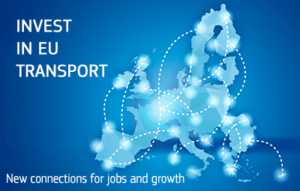Key cross-border transport megaprojects in the EU are progressing more slowly than expected.
Six of the eight multibillion infrastructures audited and their access lines are unlikely to be operating at full capacity by 2030 as initially planned, according to a new report by the European Court of Auditors (ECA). This will further postpone the completion of the core transEuropean network (TEN-T).
In 2013, the EU Member States agreed to have the core TEN-T network ready by 2030. A key feature of the network is cross-border transport projects, which aim to improve connections between national networks along European corridors.
The auditors examined whether the construction of large-scale motorways, railways and waterways with cross-border impact on the EU core transport network was well planned and efficiently implemented. They checked eight EU-funded megaprojects worth a total of €54 billion (including €7.5 billion from the EU), linking transport networks of 13 Member States: Austria, Belgium, the Baltics, Denmark, France, Finland, Germany, Italy, Poland, Romania and Spain.
Construction was significantly delayed on all the megaprojects examined (average delay 11 years), jeopardising the effective functioning of five out of nine multinational corridors. The main reason for these poor results was that projects were often poorly coordinated between countries. Member States have their own investment priorities and planning procedures, and do not always support cross-border projects or investment in transnational corridors to the same degree. Nor does project implementation always progress at the same speed on each side of the border. So far, the Commission has not made use of the limited legal tools at its disposal to enforce the priorities agreed at EU level in Member States that fail to keep pace.
“Timely establishment of the core TEN-T corridors is critical to the achievement of EU policy goals, supporting growth and jobs and tackling climate change,” said Oskar Herics, the ECA Member responsible for the report. “Additional efforts should be made to speed up the finalisation of many of the EU’s flagship transport megaprojects. Because these projects are essential to achieve a better connectivity across Europe and to deliver the network effects on time.”
Over time, the costs of the eight megaprojects have increased by more than €17 billion (47 %), often due to changes in project design and scope, as well as due to inefficient implementation. The largest increase was in the Canal Seine Nord Europe project (part of the Seine-Scheldt link), whose costs nearly tripled. In Romania, meanwhile, the auditors observed that one new stretch of the A1 motorway was unused and two sections were wrongly connected. This led to an ineffective use and waste of money.
The auditors also identified weaknesses in Member States’ cost-benefit analyses of these multibillion-euro investments: traffic forecasts were potentially overoptimistic and some projects may not be economically viable. This is particularly true of the Rail Baltica line and the rail section of the Fehmarn Belt fixed link with far too few passengers. The auditors also noted that the Commission did not assess the construction specifications independently based on potential passenger and freight traffic flows before awarding EU funding.
The Commission’s supervision of network completion by the Member States is distant and needs to be strengthened. The Commission has no specific department for providing Member States with expert support in steering such large projects, and lacks an overview of the progress made. Nevertheless, the Commission recently took a step towards closer, more effective supervision and progress monitoring by defining project deliverables in the “implementing decisions”
Source: ECA